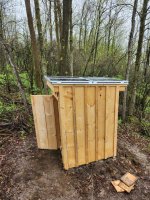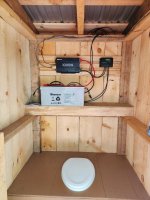There are so many extenuating circumstances to consider. Location - are you near the equator or more northern or southern longitude? Snow much? Power load - normal 2400sq ft residence or mcmansion with electric heat, AC, electric range, electric clothes dryer, hot tub, MRI machine? Need to Level 2 charge an EV? 2 EV? Your standard 200A service connection may not be enough. Grid tie only or backup power with battery array and generator?
I had installed an Automatic Transfer Switch at home to power by generator when grid goes down. Use gas for range/cooking, clothes dryer and heat/furnace which minimizes electrical utilization. Biggest draws are well-pump, microwave and coffee pot. With everything running off of generator, under 4.5kw, usually down around 3.8kw. When I got the hybrid F150 Powerboost, I was able to use it to power home in place of generator. Traded in Powerboost for F150 Lightning EV and now can use it to power home.
Solar panels on roofs provide protection of the roof from hail and also provide shade. But yes, they can and will get destroyed by a big hail event. Rather replace panels or roof? Neither is cheap...
Homeowner's insurance might be affected in certain markets. Resale value may or may not be affected.
A ton of fuzzy math involved in this equation. After getting a solid quote for my home, I passed as I have several EV and needed to ensure that my design was sane. For instance, the quote I got was for install with micro-inverters on each panel whereas if I was wanting to install the Ford Pro Charge Station with Home Integration, I was going to need DC from the panels.
Have built and maintained dozens of off-grid sites as well as sites with grid power and solar. Case use and cost are the driving factors. 20 years ROI seems like an awfully long time. But if your power bill goes to zero or spins the meter backward, that needs to also enter the fuzzy math equation.


